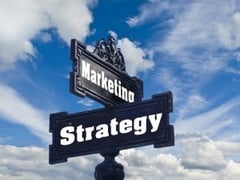

J&C Blog
Find all the latest marketing trends on the J&C Blog.

Find all the latest marketing trends on the J&C Blog.

 All too often, demand generation and lead generation are lumped together when they should be treated as equally important, yet unique partners in a content marketing strategy. The confusion often derives from the similarities between the two, yet while they appear very much alike, the two are actually very different — much like two siblings battling it out for attention.
All too often, demand generation and lead generation are lumped together when they should be treated as equally important, yet unique partners in a content marketing strategy. The confusion often derives from the similarities between the two, yet while they appear very much alike, the two are actually very different — much like two siblings battling it out for attention.
Demand generation is focused on shaping the audience’s perspective, while lead generation techniques are focused on capturing their information.1
While both components are related to one another and integral to the overall success of a content marketing program, each has its own strengths and purpose. Demand generation and lead generation techniques are not designed with a similar intent, which means to confuse or lump both together is to create less effective campaigns.
 What’s the Difference between Lead Generation and Demand Generation?
What’s the Difference between Lead Generation and Demand Generation?
Lead Generation: Is the process of collecting leads through form fills or website tracking to add to your sales and marketing database for later follow-up. This strategy is sales focused and aims to get prospective customers to the next step in the sales process through increasing levels of engagement, which means lead generation techniques are often gated.
Examples:
Demand Generation: This strategy is the practice of creating demand and awareness about a product, service, company or industry through marketing. It’s a key component of your inbound marketing strategy. Demand generation is focused on educating customers about a topic and offering solutions to their problem, which means content created for demand generation is not typically gated.
Examples:
Which Marketing Tactics Should You Focus On?
You can’t do lead generation without demand generation. Just like siblings, the two are irrevocably tied together. However, before progressing with a campaign it’s imperative to identify whether you wish to have a new business lead at the end of the day or just gain market visibility.
Demand generation is at the cornerstone of your inbound marketing strategy. It aims to attract new customers by providing informative, solution-oriented content. According to one study by Roper Public Affairs, this educational format is favored by more than 80% of decision makers.2 With a strong content creation strategy, well-thought-out and researched keywords and a targeted approach, brands can turn customers’ search-and-solve mentality into a buying mindset.
While demand generation is a component of an overall content marketing strategy, the real return on investment for a program comes from new business leads. When done right, lead generation techniques can provide your company the access it needs to potential customers. But, there’s the chicken or the egg question. What’s more important? Do you create brand recognition or go after new leads? What should be done first?
 The answer? Smart marketers weave together the two strategies. Within your master editorial calendar label each piece of content as either demand or lead generation. Now, one piece of content can’t tackle both, but one piece of content can create a chain reaction and act as a bread crumb to the other. All of your demand generation content — your blogs, infographics, etc. — should feature a strong call to action directing a potential customer to a landing page featuring an even more enticing piece of content or a contact form. This lead generation technique will enable your efforts to turn from general brand awareness into brand engagement, which is the real money maker. Don’t lose an opportunity to engage with your potential customer and nurture them along the buyer’s journey by failing to include a next step in every piece of content, including those designated as demand generation.
The answer? Smart marketers weave together the two strategies. Within your master editorial calendar label each piece of content as either demand or lead generation. Now, one piece of content can’t tackle both, but one piece of content can create a chain reaction and act as a bread crumb to the other. All of your demand generation content — your blogs, infographics, etc. — should feature a strong call to action directing a potential customer to a landing page featuring an even more enticing piece of content or a contact form. This lead generation technique will enable your efforts to turn from general brand awareness into brand engagement, which is the real money maker. Don’t lose an opportunity to engage with your potential customer and nurture them along the buyer’s journey by failing to include a next step in every piece of content, including those designated as demand generation.
Overall, examine every opportunity to identify whether demand or lead generation techniques are best suited for your objective. While blurring the lines between the two is not recommended, weaving them together in a tactical strategy could be the marketing sweet spot. Want to learn more about effective lead generation techniques? Check out J&C’s free assessment on leveraging content for more traffic and leads.
Sources:
1. Content Marketing Institute
2. Forbes
Topics: Inbound Marketing
303 E Wacker Drive, Suite 2030
Chicago, IL 60601
Phone: 312-894-3000
Fax: 312-894-3005